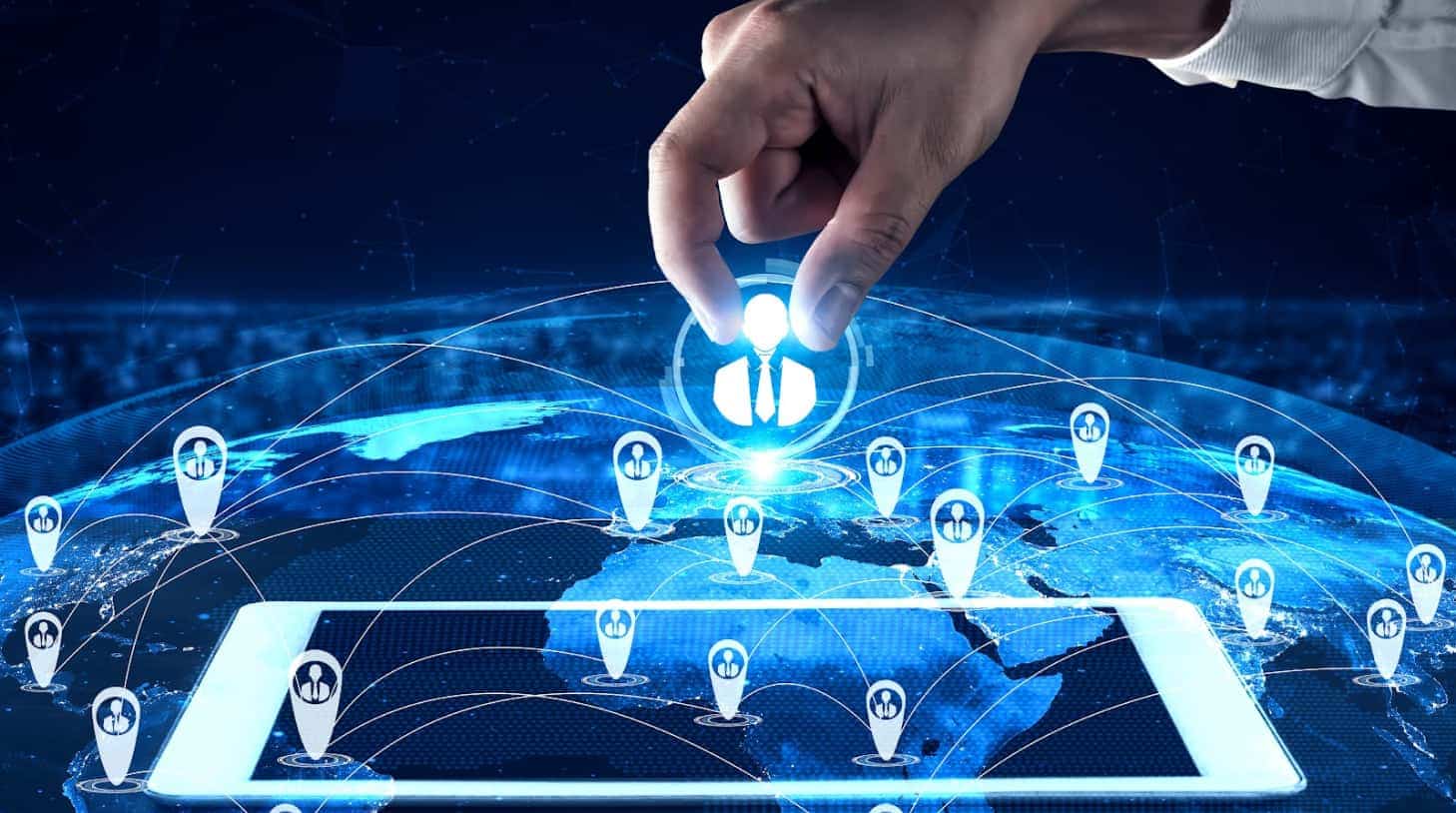HR software: All the things you need to know
HR software is a must-have for the human resources function in any organization. And before starting, you need to know what it is, what types of HR software there are, what features can be expected, and how it benefits you in your work in human resources.

Whether you’re actively shopping for new HR software for your company or just looking to learn more about what HR software is and how it can help you, we’ll help you get caught up on all the things you need to know about HR software but were afraid to ask.
Let’s get to it:
Contents
What is HR software?
HR software – or Human Resources software in full – is an application or suite of integrated programs that streamlines and automates human resources processes.
It can support a variety of tasks, from tracking employee data and benefits information to managing employee performance and payroll. You can also use HR software for recruitment, onboarding, and training of new hires.
Ultimately, HR software helps companies manage their human resources more efficiently, freeing up valuable time and resources for HR teams and employees to focus on more pertinent strategic objectives.
Want to learn more about what HR software is before going further? Check out our guide titled What is HR software – and how can it help your business?.
What are the different types of HR software?
There are many different types of HR software out there to meet the varying needs and obligations of the human resources function. Those include employee information, time tracking and scheduling, payroll and benefits, recruitment, policies and procedures, document management, and other HR-related priorities.
The range of HR softwares can be categorized into three major buckets: Human Resources Information Systems (HRIS), Human Resources Management Systems (HRMS), and Human Capital Management (HCM).
(There’s a lot more, of course, and that’s documented here.)
HRIS, HRMS, HCM: What’s the difference?
HRIS stands for Human Resources Information System, which is a system used to store and track employee information.
HRMS stands for Human Resources Management System, which is a software application used to manage HR functions in a tactical way.
HCM stands for Human Capital Management, which is an approach to managing people within an organization. It focuses on the development of people to help the organization achieve its objectives.
What to consider before choosing HR software?
If your business is growing in employee size (i.e. FTE count) or looking to significantly add to payroll in the near future, you should consider choosing an HR software.
If you are a business that has more than a few employees or if you see yourself adding to payroll over the next year, you should consider implementing a HRIS so you can streamline hiring, onboarding, tracking, and managing of employees. This includes crucial details such as payroll, benefits, contact information, policy reviews, learning & development initiatives, compliance, and so on.
An HRIS will benefit you and your teams if you find that you are increasingly burdened with menial, resource-consuming tasks in their day-to-day work. It also helps in the case that organization and management of information is becoming an overwhelming process. The automation and optimization capabilities of a good HRIS can be a great solution for your business.
What are the main features of HR software?
When assessing HR software for your organization, there are 10 major features that you can expect to be included in a high-quality application.
There are more, of course, but let’s look at these 10:
1. Recruitment
The first stage in the employee experience lifecycle is, of course, when they first apply to an open role in your company as a job candidate.
Each step of the recruitment process should be covered in an HR software, including initial screening, asynchronous and live video interviews, scheduling, assessments, and other core facets of candidate evaluation.
Just as a candidate is showing their best self as soon as they walk through the proverbial door to your company, you’re showing your best self as a prospective employer. It’s a crucial stage that can and should be effectively managed using high-quality HR software.
2. Onboarding
The next logical step after a new hire signs the job offer is, of course, the onboarding process. Onboarding may seem pretty straightforward on the surface, but that’s what they said about raising a child as well – it can get incredibly complex, because you’re effectively “raising” a new hire to their peak form as an employee in your company.
The onboarding process includes but isn’t limited to setting up one’s workstation, signing documents, familiarizing oneself with company policy and procedures, establishing expectations, getting oriented with teams and processes, etc. You should expect to be able to manage all of these things with your HR software.
3. Payroll management
You want your employees to be paid, and on time too. Plus, will it be delivered via a paper check, PayPal/Venmo, direct deposit or something else?
There are also deductions, tax withholdings (often at multiple levels), perks and benefits, raises, adjustments, and numerous other factors that you and your team must stay on top of.
And your friends in Finance will want to have visibility into this as well. Money is not funny business to them – or anyone. An HR software will make sure it stays unfunny.
4. Benefits management
Benefits are growing in stature and complexity in many organizations – it’s no longer just about an insurance policy or extended healthcare benefits or time off. It’s certainly not about ping pong tables in the office.
The list of benefits made available is growing exponentially, and the right HR software should help you manage them.
5. Employee self-service
Information is stored and managed in a single repository that’s immediately accessible to anyone who wants it.
This includes employees, who need to know how many paid vacation days are available to them, what the company’s org chart looks like, what’s in the employee handbook, who to talk to about a specific work process, and so on.
An HR software should make that easy enough for employees via a login and self-service function. Your employees deserve no less.
6. Communication
Communication is core to business success. This may be a company-wide announcement or a private message to an individual employee about something pertinent, or one-to-one discussions as part of an annual performance review – or even in the review itself.
There’s also employee feedback via all-company surveys to measure engagement and satisfaction, and departmental conversations where goals and projects are outlined.
Communications also includes policies and procedures which, as any HR professional knows, must be clearly delineated in a single place to ensure that everyone is informed and aligned.
HR software should support work-related communications of every kind.
7. Employee management
Managing the workforce – which includes recruitment, training, motivating and compensating your employees – is a lot of work. Proper employee management sets the groundwork and structure in which a business can flourish, and improves communication and collaboration throughout the company.
Employee management runs the gamut from tactical to administrative management, including employee information, KPIs, and bonuses. Any self-respecting HR software should have the tools in place to support you with all of that.
8. Talent management
Talent management is a little different from employee management – it involves a more comprehensive approach, including identifying and developing your top employees, guiding them in their career path in the organization, and ensuring engagement and motivation.
You’re not just looking to recruit, hire, manage and retain your employees – you’re looking for them to thrive. Even if it can appear less tangible on the surface, there are frameworks to follow and manage to success, and HR software makes that a more streamlined experience both for yourself and your teams.
9. Learning & Development
Learning & development is a huge aspect of the employee lifecycle – they’re not just here to work for you; they want to develop professionally and grow in their careers. And while you’re not necessarily obliged to help them in that area, you will find that there are huge benefits to your organization when you do.
When employees feel they’re attaining their professional life goals with you – and they see that you have their back in that area, they’ll stay with you.
It’s a win-win situation, and that’s where an HR software can enable and support your L&D strategy.
10. Compliance
Employee management can feel like a legal minefield at times. In fact, it can sometimes be terrifying when you don’t have all your ducks in a row. There are numerous areas that require some form of compliance with local, national and even international legislation – including data privacy, equal employment opportunity, and yes, workplace decorum (i.e. anti-harassment).
You want to ensure that your employee data is private at all times, your recruitment and workplace remain bias-free and diverse, equal and inclusive, and that everyone respects legal and moral boundaries. You also want to ensure accountability in all cases.
It’s absolutely essential that your HR software be able to maintain central records and ironclad adherence to all of the above at any time.
What benefits does HR software provide?
HR software can help improve the day-to-day work in human resources by automating repetitive tasks, optimizing complex processes, reducing paperwork, allowing for easy access to information, and monitoring key performance indicators.
1. Centralized resource management
HR software provides a centralized storage and administration platform for all the different processes in human resources, which is a huge benefit especially for a small business that may not necessarily have a dedicated HR team or even HR professional.
Honestly, your business is managing processes, payroll, benefits,recruitment, onboarding, learning & development, feedback loops, policies and procedures, org charts, promotions, raises, bonuses, performance reviews, and so much more. These can become a hot mess of paperwork if you don’t manage it properly. That’s where HR software can be a huge boon for your company.
2. Compliance
We went into a lot of detail above about compliance being a must-have feature of HR software. The benefits of having software for managing compliance are abundantly clear: the rise in data privacy and equal opportunity legislation around the world – and the increasing complexity of the same – means you need someone (a lawyer?) or something (a software?) to ensure that your company stays on the right side of the law.
And in this case, HR software is probably cheaper than a lawyer. So, the benefit is clear.
3. Data insights
The people analytics capabilities of HR software give you the ability to identify and predict gaps in workflows and teams, high-performing and lagging employees, ebbs and flows in retention, rising and falling needs for specific perks and benefits, and so much more.
With the right HR software, you’re also able to produce high-quality reports with insights to support strategic business decisions at the macro level.
4. Task optimization
HR software also helps in the day-to-day work in the trenches, including tracking employee attendance, managing employee benefits and payroll, and monitoring key performance indicators (KPIs).
The automation of replicable and menial tasks free up bandwidth and resources for HR professionals to focus on the more pertinent and essential work including in bigger-picture strategizing and decision-making. This ultimately makes HR more efficient and high-performing.
5. Clutter-free work
The hassle of paperwork such as employee records and contracts are stored electronically, making access and organization easier and mitigating the risk of losing or misplacing crucial information.
You’ve seen all those quotes about cluttered desks and cluttered minds (and in this case, cluttered organizations). That clutter can be cleared using HR software because you’re organizing, processing and storing everything in a centralized resource without the need for physical space and menial labor.
This improves efficiency and effectiveness of HR processes and optimizes the overall performance of the HR function.
Not enough? There’s a lot more to HR software than meets the eye – this guide to HR software benefits will give you a deeper dive in this area.
How do I find the best HR software?
When shopping for HR software, you want to settle on an application that meets the current needs of your business. And that may differ based on FTE size, growth plans, industry and location, and tech stack compatibility.
But no matter what, the best HR softwares will always be:
1. Flexible & customizable
An HR software should be flexible and customizable based on the specific needs of your HR team and your business strategy. You don’t want to paint yourself into a corner or be forced to adapt your needs and strategies to make the most of your HR software – the application should work for you.
2. Easy to use
When you introduce new processes, procedures or applications to the company, you want everyone onboarded into the system as quickly and effortlessly as possible, and you want total user buy-in. A great HR software should be plug-and-play with a smooth and intuitive interface, and easy to implement and operate.
3. Budget-friendly
An HR software shouldn’t break your company bank. It should come at a reasonable cost and the return on investment should be clear from the get-go. This should be made apparent in your initial interactions with the HR software provider, and the tool and all its features should be absolutely affordable for your organization.
4. Seamlessly integrated
Most, if not all, organizations have existing technologies in place for varying purposes. If you already have an ATS or benefits technology in place, your HR software should integrate seamlessly with that. In short – your new HR software should plug neatly into your existing tech stack without any hiccups or misalignments.
HR software: the tech that keeps on giving
Every company in this day and age needs a tech stack to manage all the different aspects of business, regardless of size, breadth and depth. HR software is a must-have in that tech stack. In many cases, it’s scalable – and as a result, the payoff grows over time.
Consider the features and benefits that a good HR software can bring you, and decide accordingly.




